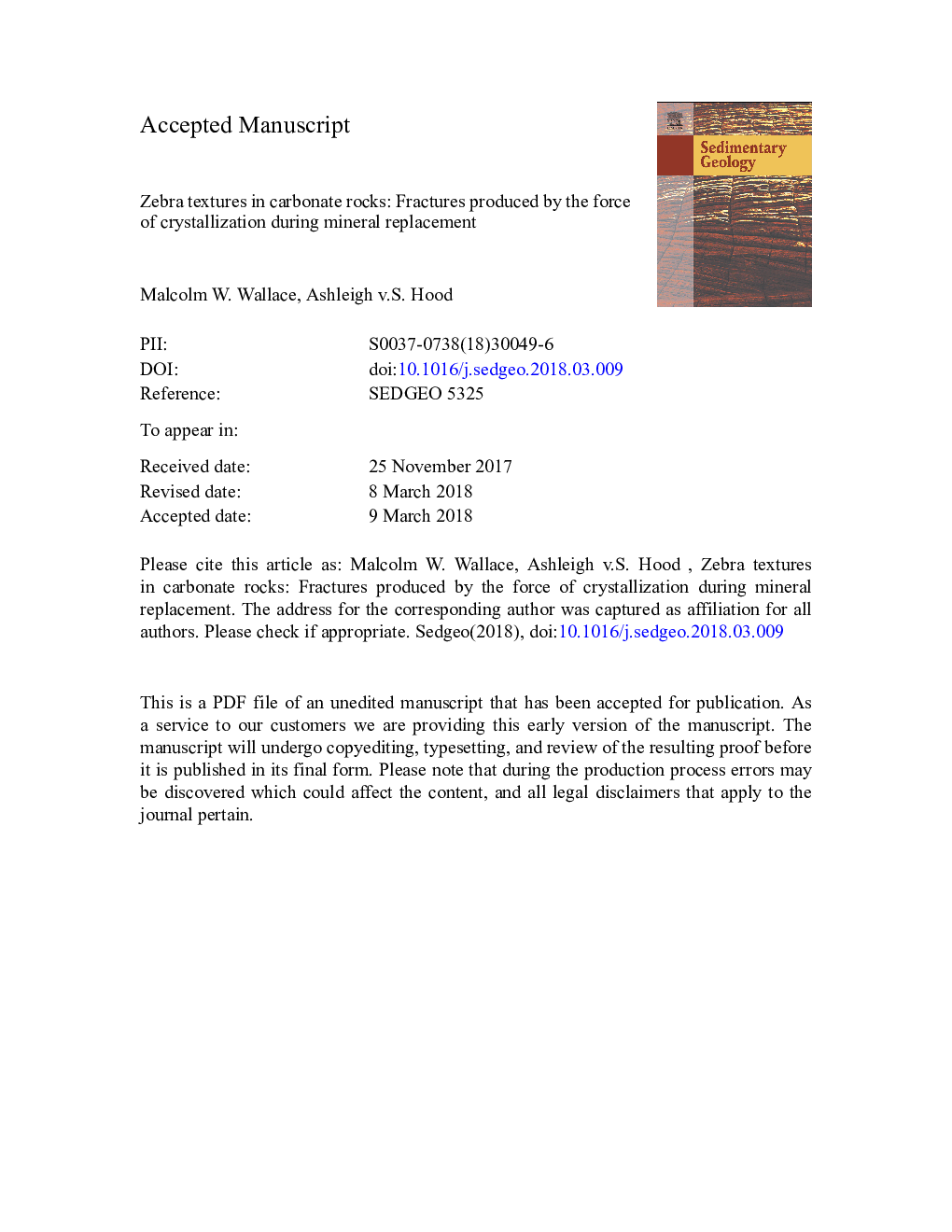| Article ID | Journal | Published Year | Pages | File Type |
|---|---|---|---|---|
| 8908514 | Sedimentary Geology | 2018 | 40 Pages |
Abstract
We suggest that mineral replacement (and the force of crystallization) in association with open space generation is a viable mechanism for the development of zebra cavity systems. Dissolution and open space generation in either evaporites or carbonates adjacent to the site of replacement reactions is necessary to remove the confining pressure from the rock and to allow the development of fractures. The pressure of the growing replacement crystals within the carbonate pervasively splits the carbonate apart, producing thin strips of carbonate surrounded by open space. The fractures may then be subject to dissolution and are later filled by cements. Very regular stratabound zebra textures (as found in ore deposits like Cadjebut, Australia and San Vicente, Peru) may be related to stratabound dissolution (of evaporites or carbonates), whereas irregularly distributed zebra textures are more likely to be associated with irregular carbonate dissolution.
Related Topics
Physical Sciences and Engineering
Earth and Planetary Sciences
Earth-Surface Processes
Authors
Malcolm W. Wallace, Ashleigh v.S. Hood,
